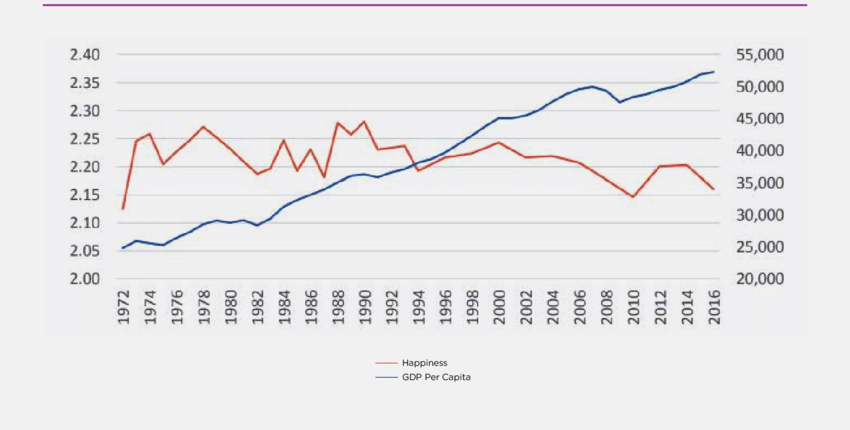Worldwide over the decades often led by the United States, health outcomes have improved dramatically in many ways. Below, I highlight some major improvements to our health and wellbeing, discuss the causes, and yet contrary to what is clearly encouraging news, I conclude that we’re on the wrong track. I suggest a new direction forward. Start with the good:
Child Mortality has Plummeted
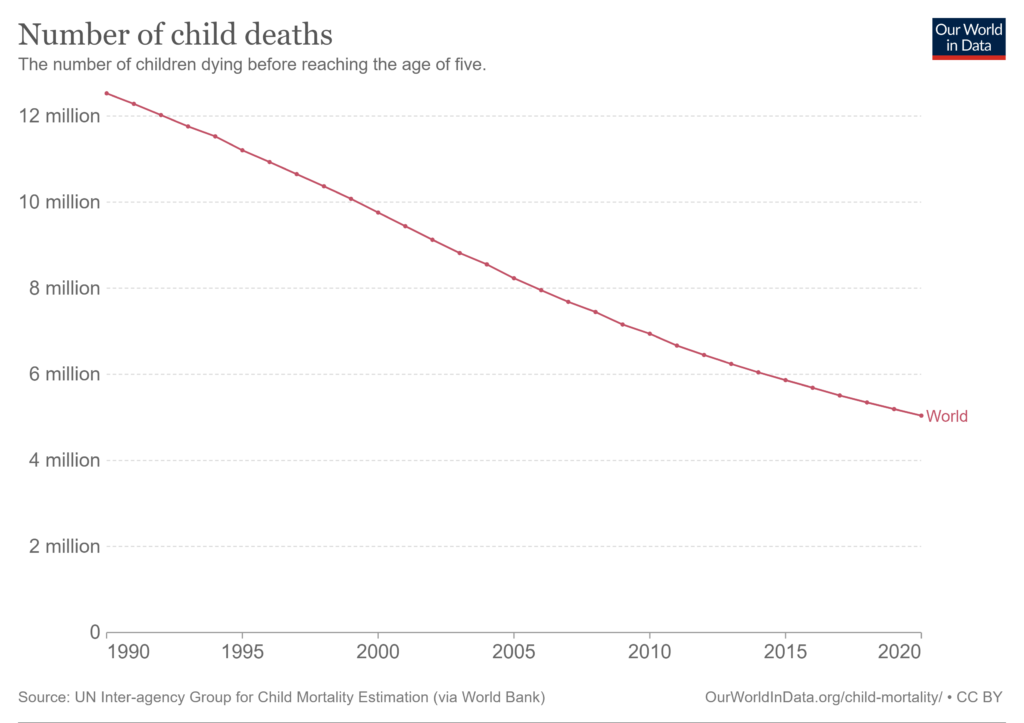
Perhaps there is no graph that one can produce that is more encouraging than this one. In fact, historically in millennia past nearly half of all children did not survive past the age of 15 years and more than a quarter of the population died in their first year of life. Child mortality dramatically and suddenly declined in the recent several decades. Today, on average mortality rates among children are 10 times lower than in the past.
Equally encouraging, the trends are universal across the globe:
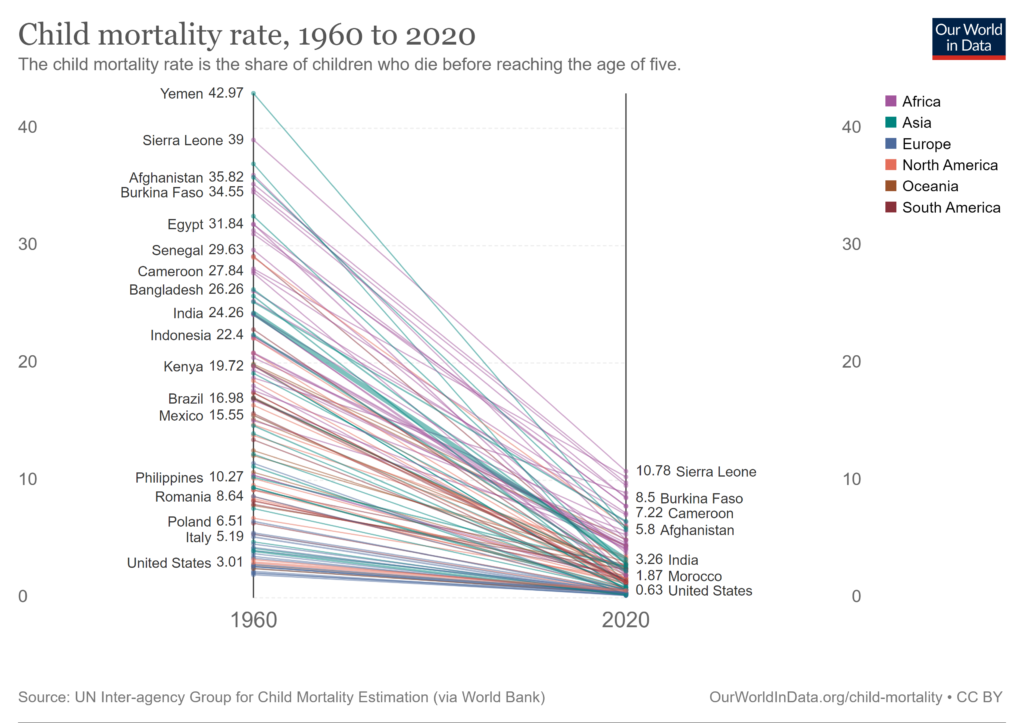
Infectious Diseases have come down Dramatically
Obviously this is a part of the reason for the encouraging statistics in child mortality we saw above but it is also an important reason why people of all ages are living healthier lives.
Most impressive is that fact that small pox became the first (and so far only) disease to be completely eradicated from humans in 1979. That is a major killer that is estimated to be responsible for about 300million people in the last century alone.
In fact, nearly all the infectious diseases that were major killers historically is trending downward as illustrated below by Scientific American:
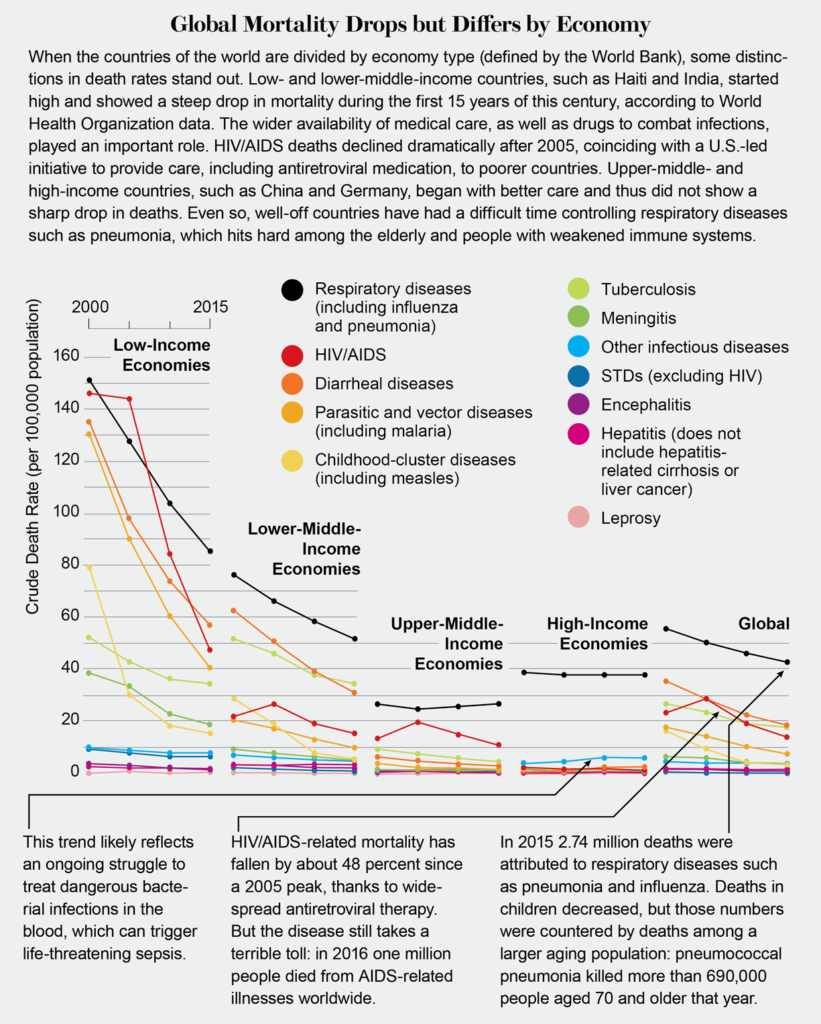
Life Expectancy has Increased Dramatically
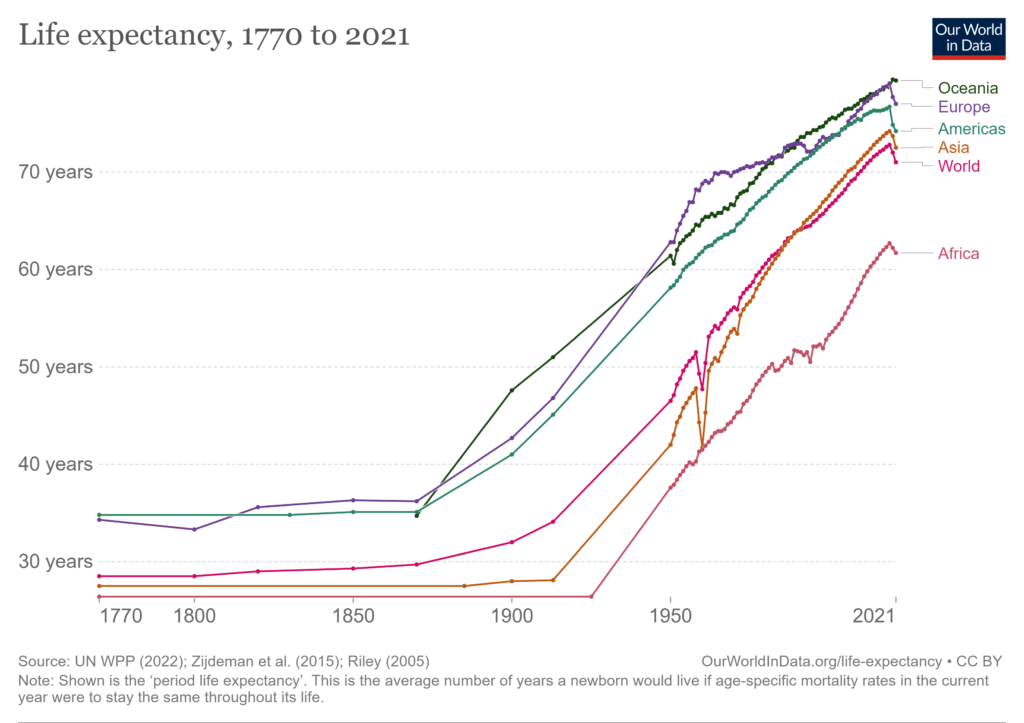
Once again, this reflect both the reduction in child deaths and reduction in infectious diseases. It also reflects the fact that we are much better at providing nutrition and thus preventing malnutrition and starvation.
Extreme Poverty has Plummeted
Closely related to this trend is the massive drop of extreme poverty over the last few decades which obviously helps reduce malnutrition:
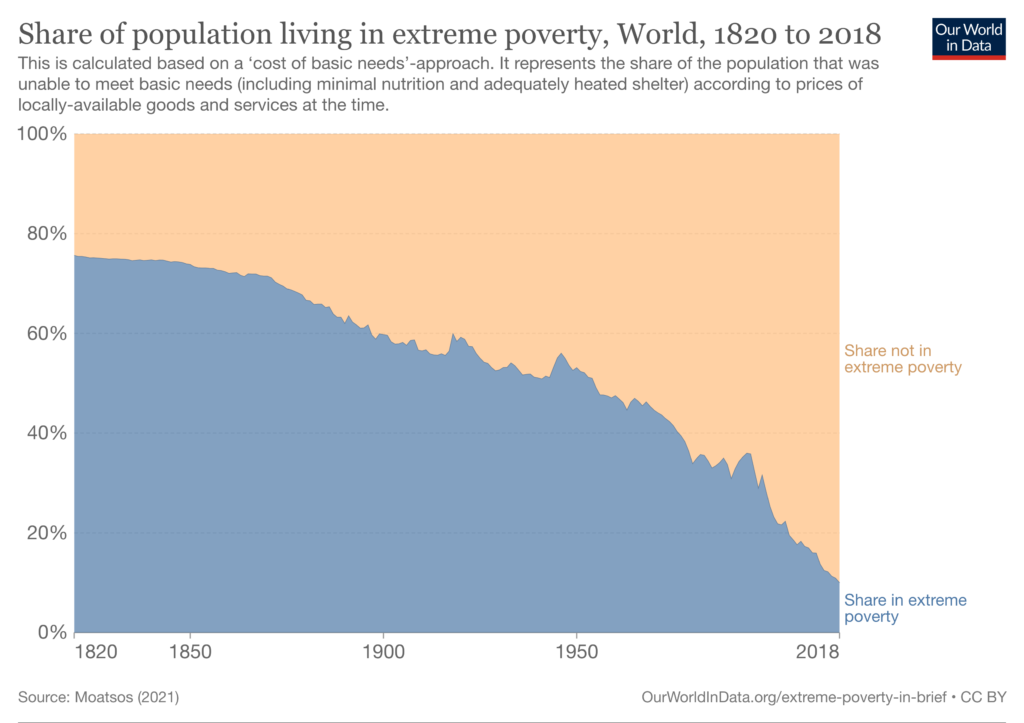
Surely among humanity’s greatest achievements. Increasing economic productivity is a fundamental reason for lifting so many out of extreme hardship. Capitalism and good government are the biggest reasons for this enormous success. Charitable giving was also an important factor that drove many of the global health outcomes (especially funding from the Global Fund to fight AIDS, TB, and Malaria; The Presidents Emergency Plan for AIDS Relief; and GAVI, the vaccination alliance).
We are on the Wrong Track
Given all the success, how can anyone possibly think that we’re on the wrong track? See why in the graphs that follow. The problem is that as we’ve graduated from suffering the afflictions of poverty, we are instead now developing the diseases of affluence. Of course, any sensible person would take that trade any day – EXCEPT if there were a way to take the good without also taking the bad. As it turns out we can, and by continuing along our current approach, we are shooting ourselves in the foot. See for yourself below:
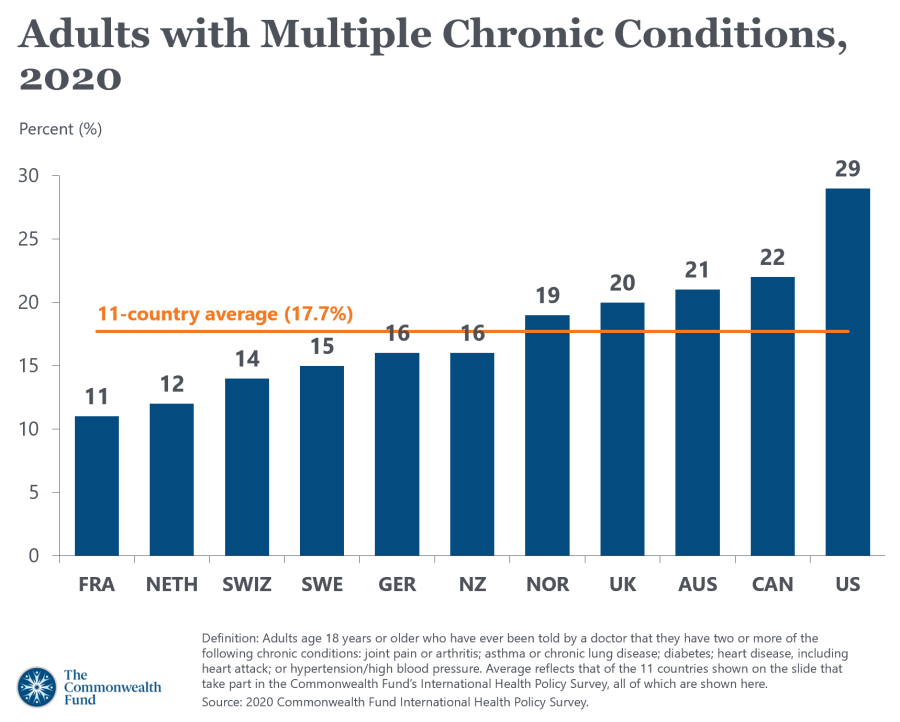
Sadly, we in America are leading the way in the development of chronic disease but that is not to say that we are an exception. In the graph below we see that obesity rates are rising in all countries.
Obesity Rates are Rising Rapidly
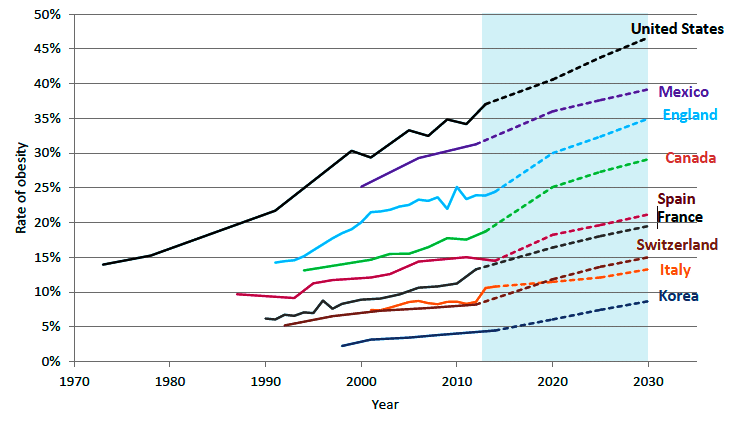
Along with the rise of obesity, many other chronic diseases driven by obesity including diabetes, hypertension, osteoarthritis, certain cancers and others are also rising.
Likewise, in the graph below, we see once again the US is spending significantly more per capita than other nations on health care.
No Country has Bent the Cost Curve

The US is an outlier in terms of spending on healthcare for reasons that is beyond the scope of this discussion. But ignore the US for now and notice that all industrialized nations are spending a higher percentage of Gross Domestic Product (GDP) over time on healthcare. Of course, we expect more spending over time. That itself would not be surprising but the percentage of spend has nearly doubled since 1980. That too is not a problem if that translates to better health over time. As we saw above, this is the case as countries develop and people no longer live in poverty, but the data that this is the case for developed countries is lacking as illustrated above (you can also see hints of that in the Scientific American graphs and illustrations above).
Despite spending a higher percentage of GDP on healthcare over time, obesity rates and chronic disease rates is only increasing. Thus, no country has solved the healthcare dilemma by bending the cost curve and there is a reason why. This really just reflects that fact that increasingly fewer Americans (and other developed nations are not doing much better) are meeting the well-established standards for healthy living. In fact, in 2016 one group of researchers found that only about 2.7% of Americans managed to follow a healthy diet, exercise regularly, not smoke and maintain a healthy weight.
Happiness is Declining
The problem is that while GDP growth driven by capitalism was a large part of the reason for our overcoming the diseases of poverty, it is also the reason for the decline of our health in America and the rest of the industrialized countries. Ultimately the decline in health translates to a reduction in well-being and happiness as illustrated below in this graph from the 2018 World Happiness Report:
